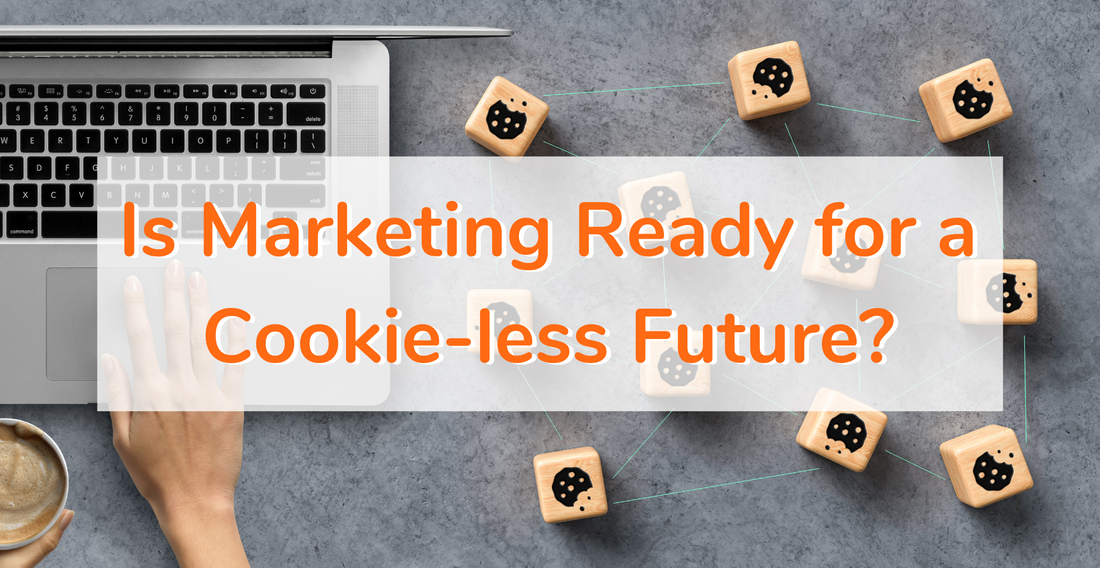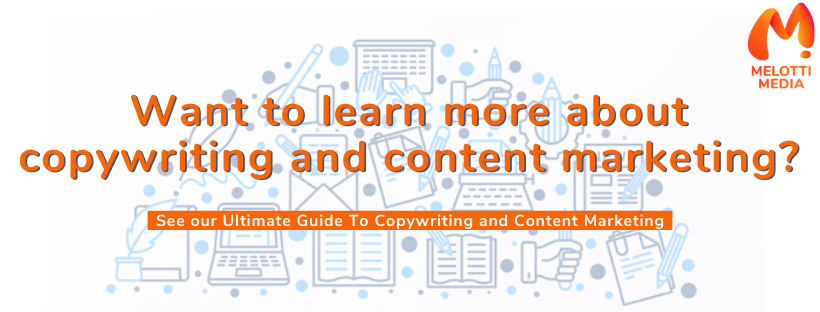Google AdWords, re-target marketing and browser cookies are staples in today’s marketing environment. Most, if not the majority of businesses, use some cookie-based advertising to get clicks, attract leads and secure conversions.
As businesses, we are familiar with it. As customers, we see it every day.
This type of targeting works by using data crumbs or “cookies” to target audience groups based on their web browser behaviour. This cookie-based advertising allows different companies to display ads throughout a user’s browsing experience once a web surfer has expressed interest in a certain product or service.
However, digital advertising’s reliance on third-party cookies for years is coming to an end.
So, what is the future of audience targeting?
Prefer to listen, rather than read? Here’s the Podcast summary!
Why do Internet platforms restrict the use of cookies?
There was a time only a decade ago where people were just happy to give up all of their private information to any company or social media platform that asked for it.
However, today, this has changed.
With an increase in global demand for user privacy, around 79% of adults in the US alone have expressed their concerns about the amount of data companies can collect about them and how that information was being used. They’re not alone.
According to a recent privacy survey conducted by the Australian Government:
Australians are increasingly questioning data practices where the purpose for collecting personal information is unclear, with 81% of Australians considering ‘an organisation asking for information that doesn’t seem relevant to the purpose of the transaction’ as a misuse (up 7% since 2017).
People are more concerned about personal data privacy – and now they’re going to get it. So, marketing has to adapt.
In response to this concern, many technology platforms have recently implemented restrictions around data collection and user tracking. Google, for instance, has announced that it will phase out and ban the use of online tracking tools in its browser by 2023.
They’re not alone either. Apple, Firefox and many other internet browsers are following suit.
Google has announced they will phase out and ban the use of online tracking tools in their browser by 2023.
The internet’s lifeblood has always been the consumer’s data.
It is collected by third-party sites so businesses can track their website visitors, improve the customer experience and figure out their visitors’ web behaviours.
Now that huge tech platforms have planned to banish these cookie trackers from their web browsers, many marketers are wondering if businesses are ready for a “cookie-less” future.
To give you a better idea of how these cookie restrictions work, we’ve listed 4 of its potential impacts on marketers and their digital media campaigns. Remember – it’s early days right now and so, these are our assumptions based on what we know at the moment.
4 potential impacts of cookie bans on marketing campaigns
- Re-targeting will be almost gone – With the absence of third-party cookies, retarget marketing will be harder to implement, which means it will be more difficult to nurture customers as they travel around the internet.
- Converting will become more difficult – Marketers will no longer be able to automatically stop their campaign promotions for their converted audience, as well as figure out which sales were a direct result of their promotions.
- Scarcity of audience information – Advertisers will have a more challenging time once third-party data is eliminated. They will no longer have any perception as to whether or not audiences have already seen their ad.
- Shift from demographic to contextual targeting – Contextual targeting is when you show ads to your audience which are related to the site where they are currently in, regardless of their previous search history and web behaviour. With the obsolescence of third-party cookies, contextual targeting will be more prominent.
5 tips to prepare for a cookie-less marketing environment
A recent survey by Adobe has found out that only 37% of businesses are well prepared for a future without third-party cookies and its impending obsolescence.
Around only 37% of businesses are well prepared for a future without third-party cookies.
This huge change is an opportunity for brands to come up with innovative new ways to improve their customer experience with a more personalised approach – yes, even without the use of third-party data.
The remaining 63% of companies who are still not prepared for a “walled garden” future can adapt by using first-data strategies to create a thriving environment for digital marketers.
Here are our 5 tips to prepare yourself for a world without third-party data:
Audit and assess your business for impacts.
Now is the best time to assess your business’ first-party data strategy, so you can better understand the depth of your digital plans which are being heavily reliant on third-party data.Identify opportunities for optimisations and come up with strong strategies to navigate the cascading effects of the tech giants’ identity and privacy changes.
While marketers may feel a decline as they cope with a different digital ad targeting landscape, coming up with a backup plan by reinventing and redirecting cookie-related media spend can help future-proof your brand against unprecedented changes and shifts in the digital marketplace.
Leverage first-party data.
First-party data is the information that you directly collect from your customers. This is the most reliable and important information you can use for identifying your target audience, understanding how they engage with your brand and finding the best way to reach them.But without cookie-based targeting, your business will need to supply your own first-party data. As such, make sure your website is set up to collect the data you need like emails, phone numbers, purchase history and website behaviour.
In this way, you’ll be well equipped for more predictive modelling. By deeply understanding how your customers have interacted with your website and understanding their personal preferences, your audience will see more personalised and relevant advertising – even without you totally relying on Google’s platform.
Capture people-based durable identifiers.
People-based identifiers are comparable to authenticated IDs, addressing privacy concerns. The personal information types mentioned in tip 2 (above) are efficient alternatives to continue to target your customers and reach a wider audience.As an example, utilising hashed emails allows you to access valuable customer data by identifying their online behaviour where they have used the same email address. By doing this, you can trace your own visitor’s web activity across devices without crossing the privacy boundaries.
Start adapting into a walled garden environment.
Find your comfortable spot now that we are transitioning into a “walled garden” and moving more towards media investments. Here, you can prepare to increase Facebook, Google and Amazon allocations which will then allow you to match your own datasets to their respective ad platform datasets.By utilising these walled gardens and the data they provide, you will also be able to discover new customer insights and figure out how respective interaction points on these networks can lead to a sale or conversion.
Provide your audience with value exchange.
Although media behaviours are evolving, the basic customer premise always remains the same – your audience is willing to give their time, attention or information ONLY if it’s worth it for them. Businesses that can recognise this concept and wisely apply it to the way they interact with their target audiences will thrive in a cookie-less environment.
Your audience is still willing to give their time, attention or information but ONLY if it’s worth it for them.
Make your marketing valuable to them.
Remember – even though a business’ ultimate goal and objective is to promote growth and understand their customer’s behaviour with the use of their data, these goals should go hand-in-hand with earning and maintaining customer trust with quality targeting.
The cookie-less future is still bright for digital marketers
Third-party cookies obsolescence doesn’t have to be a cookie-pocalypse for digital advertisers and marketers!
Instead, it can be a catalyst for businesses to take a step back and have a re-think about your strategies around how you can improve your customer experience without solely relying on third-party data.
We’re fortunate at Melotti Media that cookie-based marketing makes up only a quarter of our marketing program. It’s a smart plan to diversify your marketing like this.
Shifting the focus towards your own first-party data strategies, such as sign up newsletters, can effectively improve personalised experiences all across the customer journey – all while still eliminating the harmful risk and privacy threats caused by third-party cookies.
It’s also a smart move to re-diversify your marketing to be less reliant only on third-party data. For instance, getting back to network and event marketing, word-of-mouth, content marketing and more. This will help soften the blow for when these browsers update their privacy policies in the next few years.
You may want to consider investing in other forms of marketing such as content marketing to soften the blow of this change to cookie-based advertising.
How can Melotti Media help you?
This significant shift in the marketing environment is monumental for every brand. As a business owner or marketer, we understand that you may feel a little lost or want to know how you can prepare.
That is where our expertise can come in.
At Melotti Media, we can help you assess and refocus your marketing efforts in this “walled-garden” future. With our Marketing Audit service, we help you understand which activities work best for your business and which don’t.
Let’s pivot your future and achieve better results in an ever-evolving marketing environment. We can assist with all your message marketing and copywriting needs while you focus on what matters most to you – growing your business.
Let’s start earning the results your business deserves.
To speak to your trusted message marketers and copywriters, email us at enquire@melottimedia.com.au
We can sharpen your words to achieve your goals today!
The Melotti Media Team
Melotti Media | Copywriting & Message Marketing Bureau
www.melottimedia.com.au













